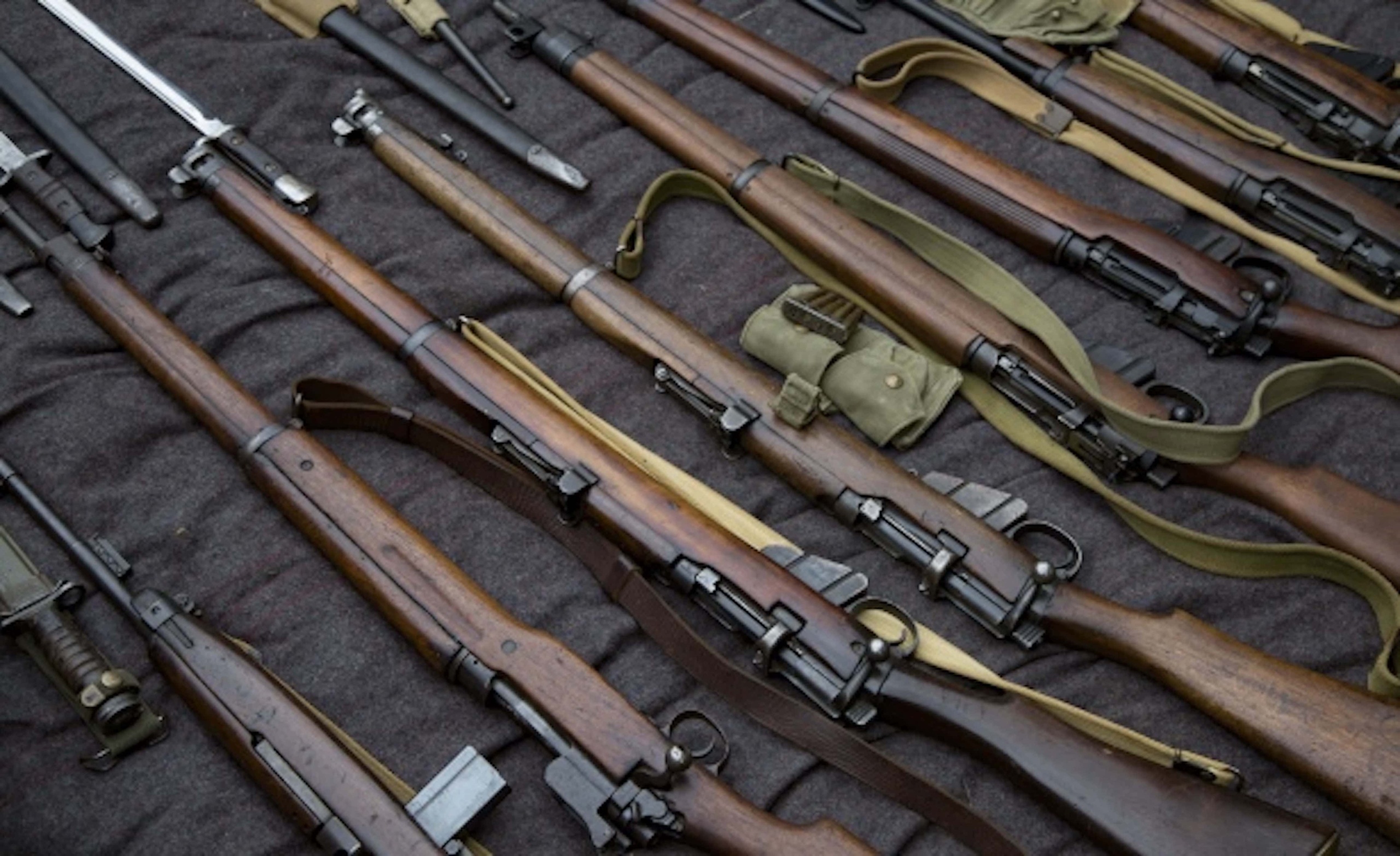 No country identifies itself more closely with the rifle than the United States. A short tour of the Hollywood version of its history is proof enough:
No country identifies itself more closely with the rifle than the United States. A short tour of the Hollywood version of its history is proof enough:
Rifles for colonizing. They were the preferred weapons of the westward expansion of the white Anglo-Saxon Protestants (WASPs). The Conquest of the West was no simple advance through wild, unpopulated territory. It required the dispossession, mainly by rifleshot, of dozens of indigenous nations over millions of square kilometers of land.
Rifles for decimation. Once conquered, the native people tended to rebel, from the Powhatans on the East Coast as early as the 17th century, to the various Plains Indians, such as the Cheyenne and the Sioux, as well as the Apaches and Comanches in the Southwest. They ended up decimated, virtually annihilated. The 1890 massacre of the Sioux at Wounded Knee is still solemnly commemorated today.
Rifles for invasion and subjugation. U.S. foreign incursions to expand its dominance and markets are legion. In the Americas alone, there have been 30 such interventions since 1776, from the Arctic to Tierra del Fuego. We in Mexico experienced the unwelcome presence of U.S. soldiers in 1846 and again in 1914 and 1917. Other Latin American nations that have suffered U.S. interventions include Cuba and Puerto Rico at the end of the nineteenth century; the Dominican Republic in 1917 and 1965; and, more recently, Panama in 1983 and Grenada in 1989. Incursions on other continents are nearly as numerous (28), outstanding among which are the two world wars, the Spanish-American War, Vietnam, Iraq (twice) and Afghanistan. The setting may change, and rifles have evolved into much more powerful weapons, but they are always there.
Rifles for repression. Whether they were fired or not, rifles and their descendants were instruments of suppression of the civil rights movement of the 1950s and 1960s, the anti-war protests during the Vietnam War in the 1960s and early 1970s, and the uprisings by oppressed minorities in cities such as Los Angeles, Baltimore and Chicago.
Rifles for entertainment. Rifles are not just props in popular Hollywood movies and television programs; they are often the stars of the show. What Baby Boomer doesn’t remember “The Rifleman”? The rifle as protagonist goes back to films of the musket-carrying heroes of the War of Independence, through the Winchester 73 of Westerns, on to the M1 of World War II epics (and TV programs such as “Combat”) and finally to the M16 used by the troops, often sub-contracted, in newer films of the wars of the Middle East.
The Second Amendment to the U.S. Constitution is today interpreted as granting individual U.S. citizens the right to possess and carry firearms. In a sense, this interpretation has ushered in what might be called “the democratization of legitimate violence,” a concept that in theory is reserved for the State. As a result, the “legitimacy” of an act of violence with a firearm does not longer depends so much on any constitutional or legal clause or body as it does on whatever criteria individuals might use to justify their action.
This “horror origin” is a factor in the ongoing massacres. Because once an individual justifies to themself the desire to kill, be it for whatever reason — hatred stemming from white supremacism, revenge for personal affronts, one of a host of mental disturbances common in that traumagenic society — acquiring the lethal weapon to do it with is the least of their worries. That justification may be a perceived threat (almost always more imaginary than real), but from there it’s a small step to slaughtering small children, young students, or innocent supermarket shoppers.
Of course, there are many more mentally and socially well-adjusted people in the United States than disturbed or sociopathic individuals. However, it’s not the healthy majority that dominates, but rather a repressive, violent and exclusionary social system. The stars and stripes have become the guns and stripes.
For how long?
* * * * * *
I express my solidarity with the victims in Uvalde, the majority of whom were boys and girls of Hispanic origin.
* * * * * *
Víctor M. Quintana is an adviser to the Frente Democrático Campesino de Chihuahua, a researcher/professor at the Autonomous University of Ciudad Juárez, and a collaborator with the Americas Program.



